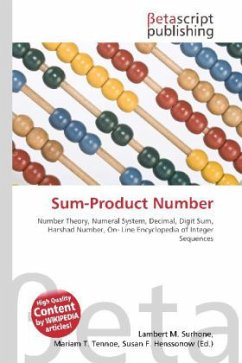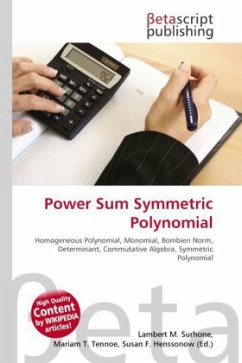Please note that the content of this book primarily consists of articles available from Wikipedia or other free sources online. A sum-product number is an integer that in a given base is equal to the sum of its digits times the product of its digits. Or, to put it algebraically, given an integer n that is l digits long in base b (with dx representing the xth digit), if n = (sum_{i = 1}^l d_i)(prod_{j = 1}^l d_j) then n is a sum-product number in base b. In base 10, the only sum-product numbers are 0, 1, 135, 144 (sequence A038369 in OEIS). Thus, for example, 144 is a sum-product number because 1 + 4 + 4 = 9, and 1 × 4 × 4 = 16, and 9 × 16 = 144. Obviously, 1 is a sum-product number in any base, because of the multiplicative identity. 0 is also a sum-product number in any base, but no other integer with significant zeroes in the given base can be a sum-product number. 0 and 1 are also unique in being the only single-digit sum-product numbers in any given base; for any other single-digit number, the sum of the digits times the product of the digits works out to the number itself squared.
Bitte wählen Sie Ihr Anliegen aus.
Rechnungen
Retourenschein anfordern
Bestellstatus
Storno








